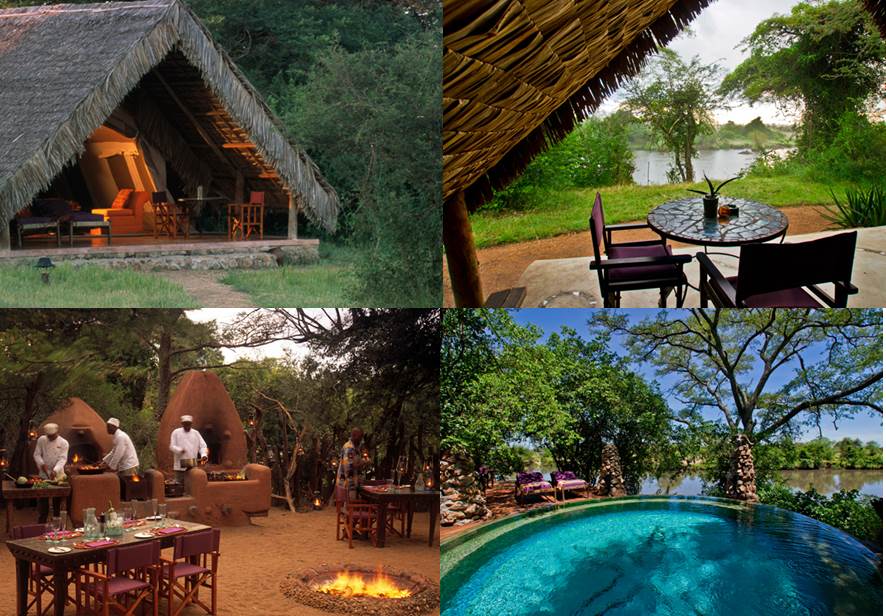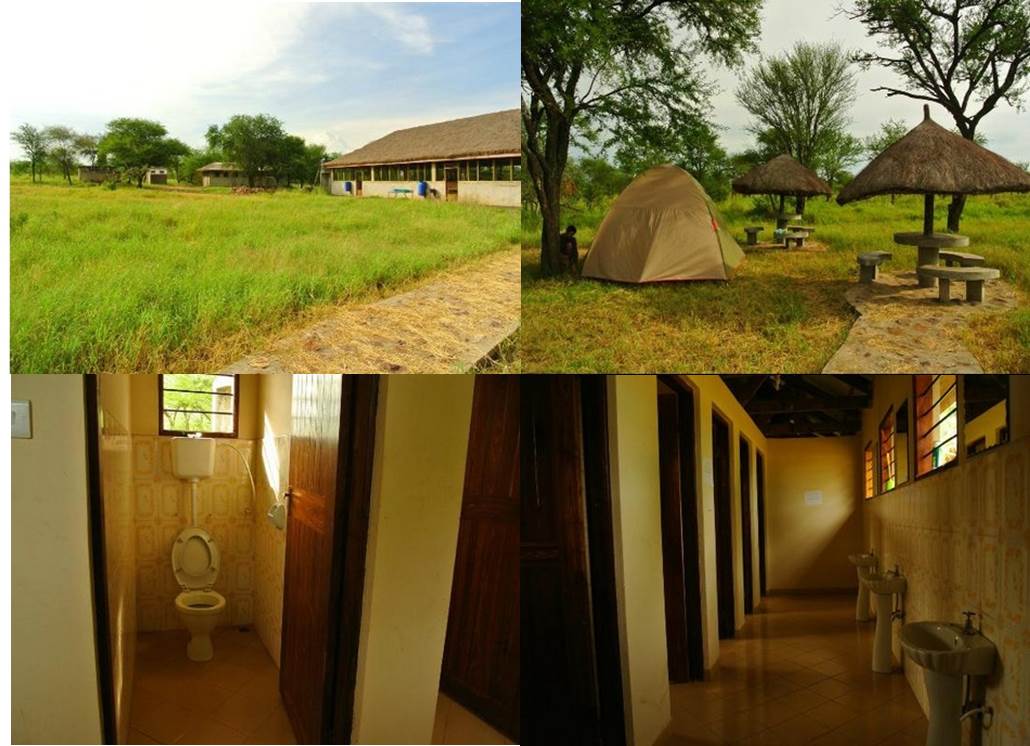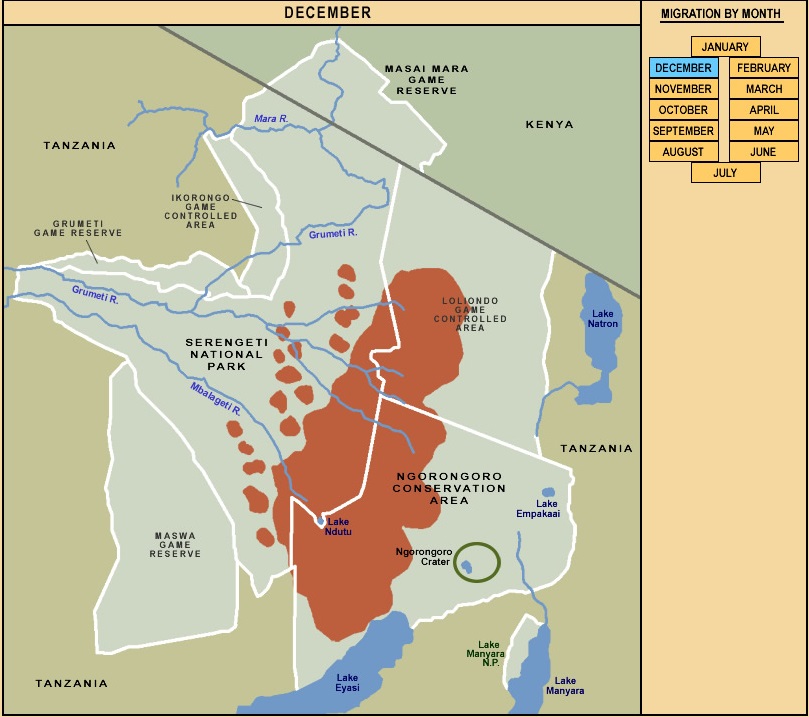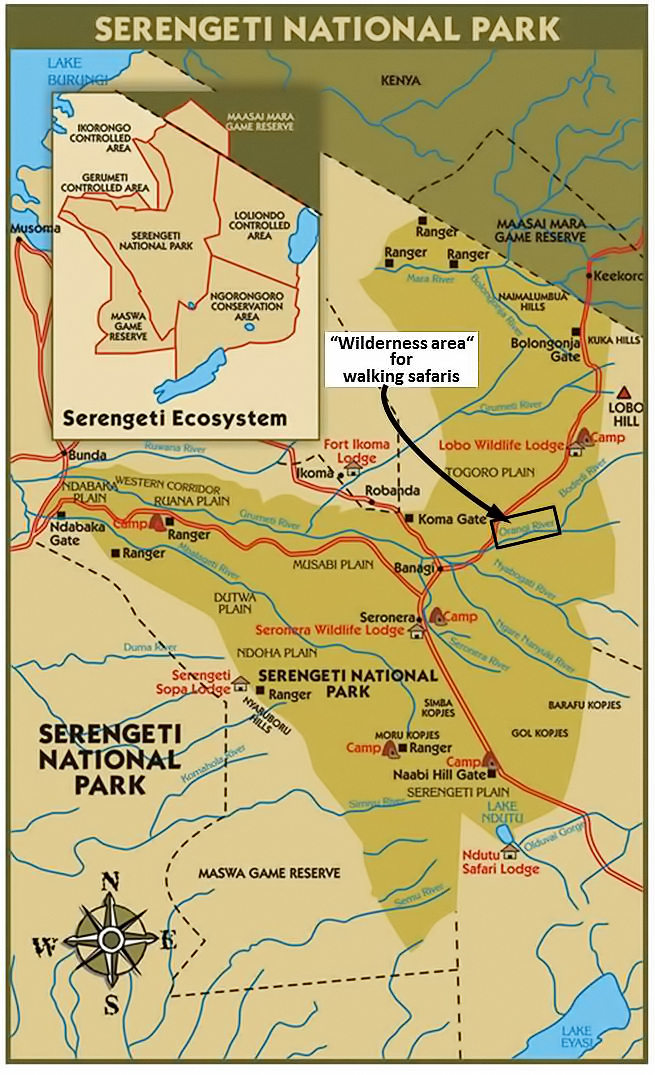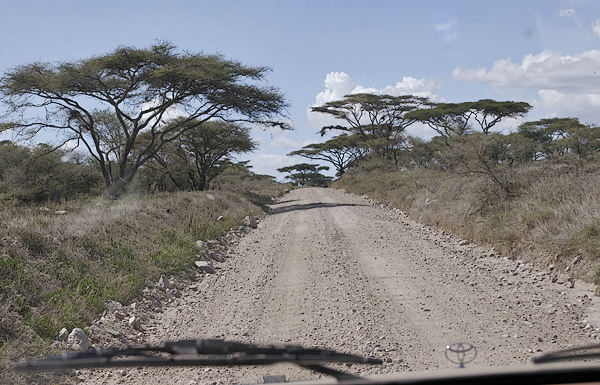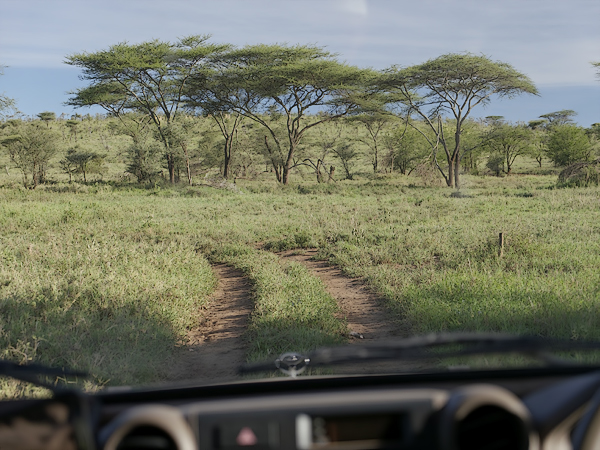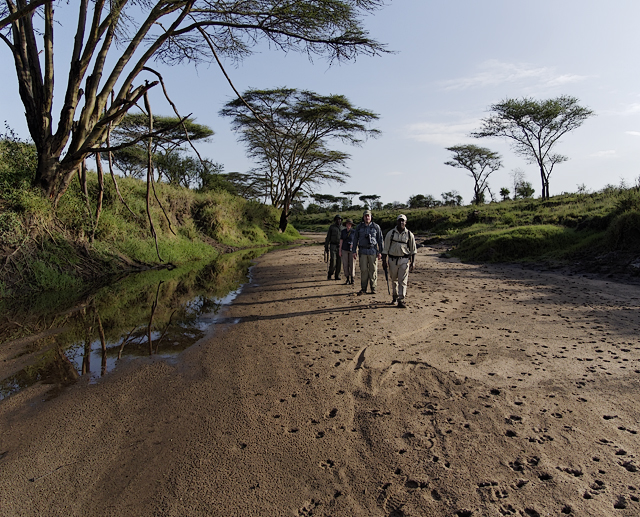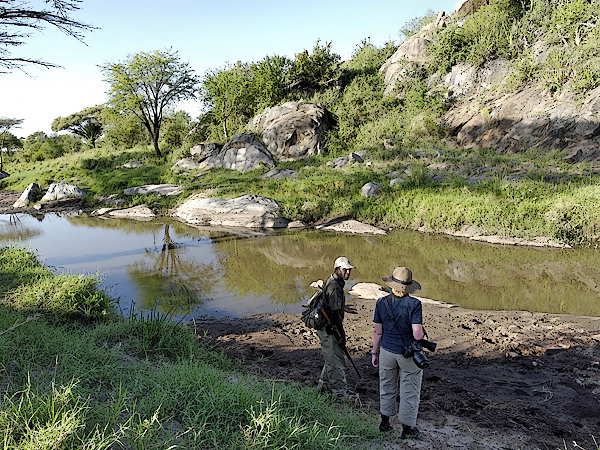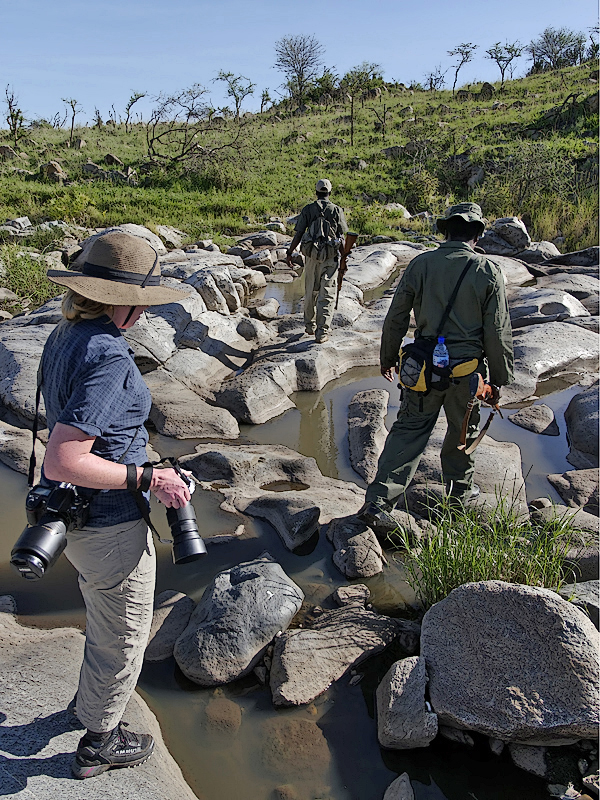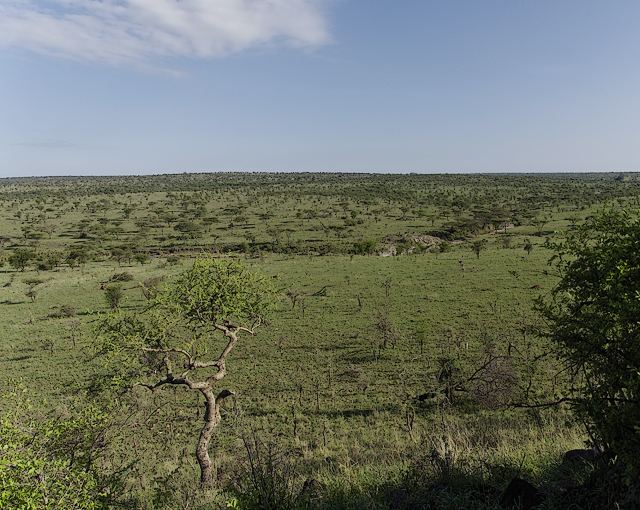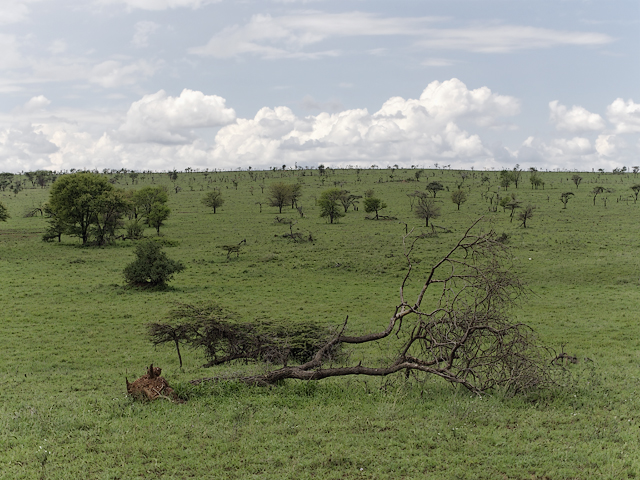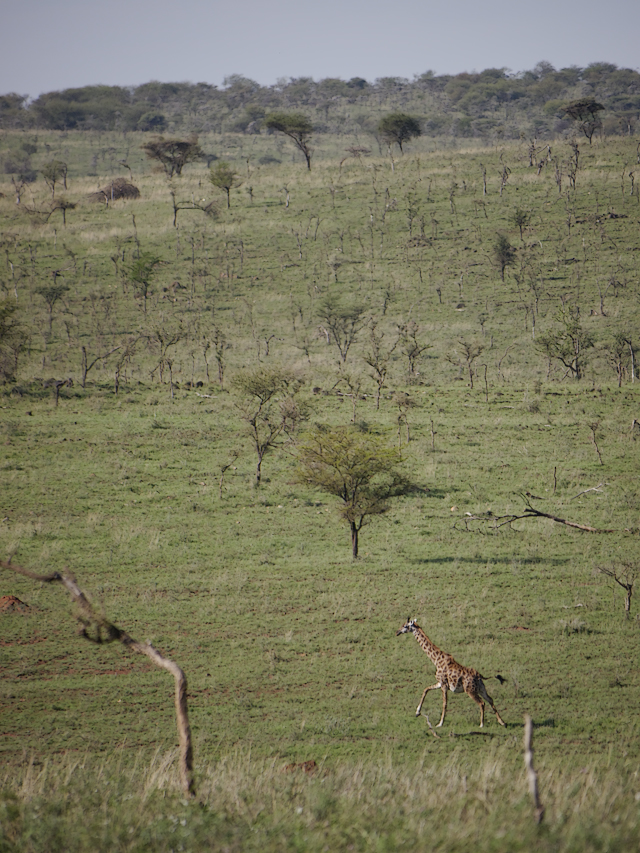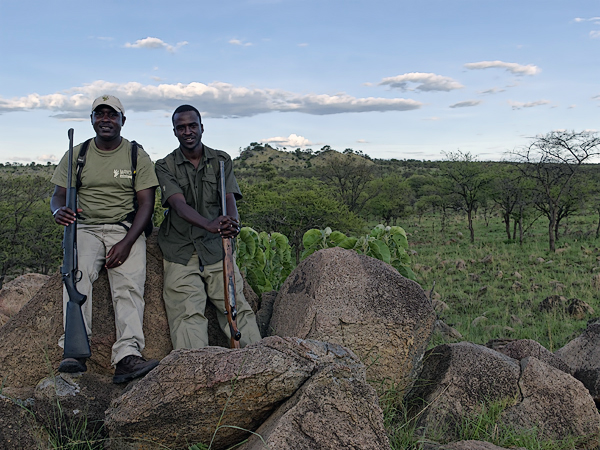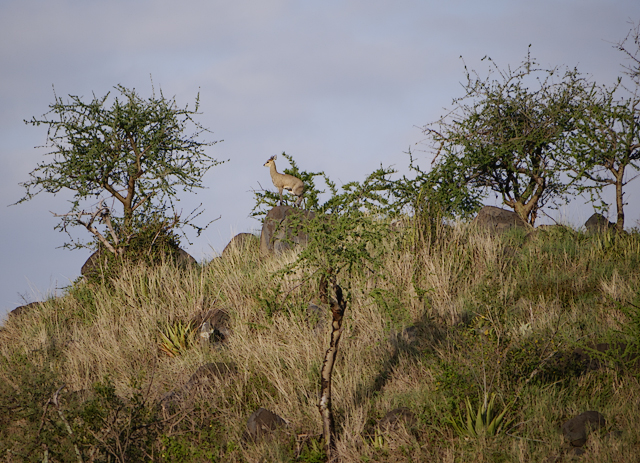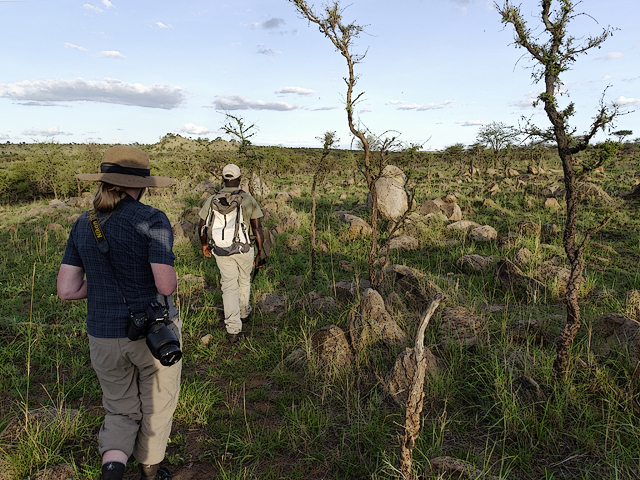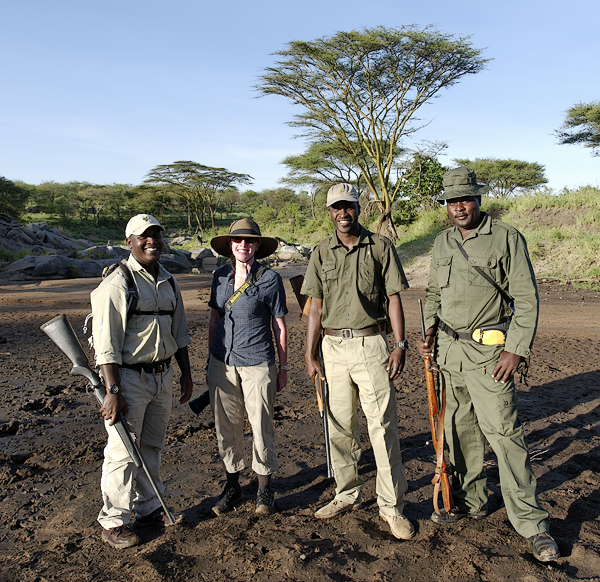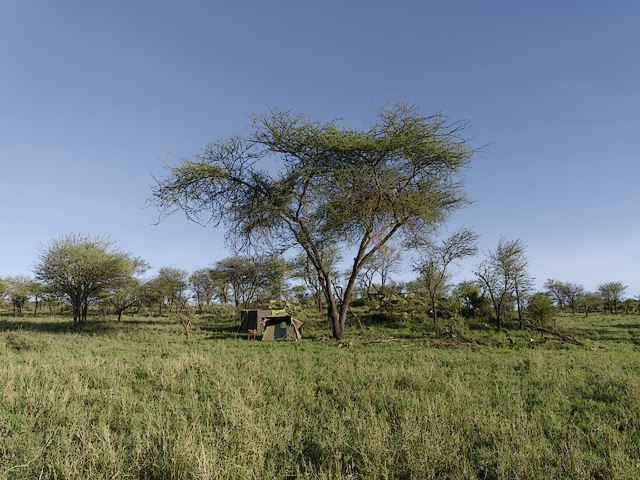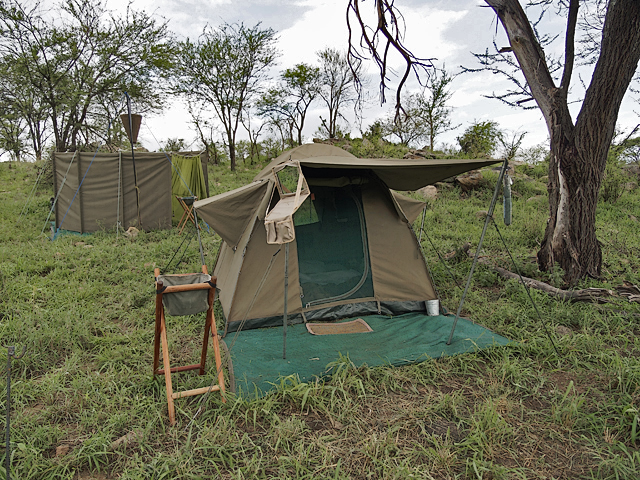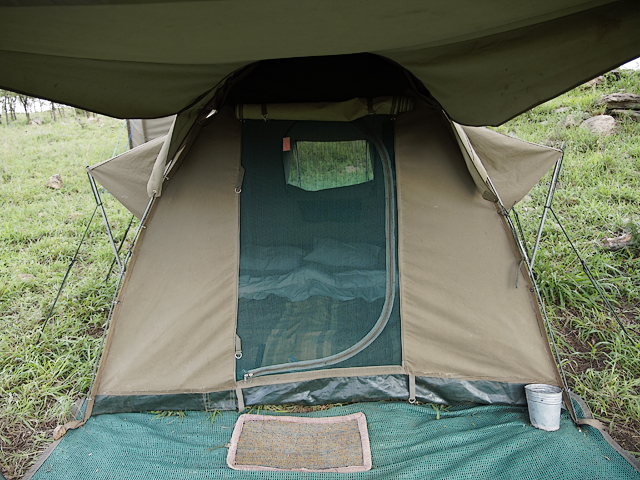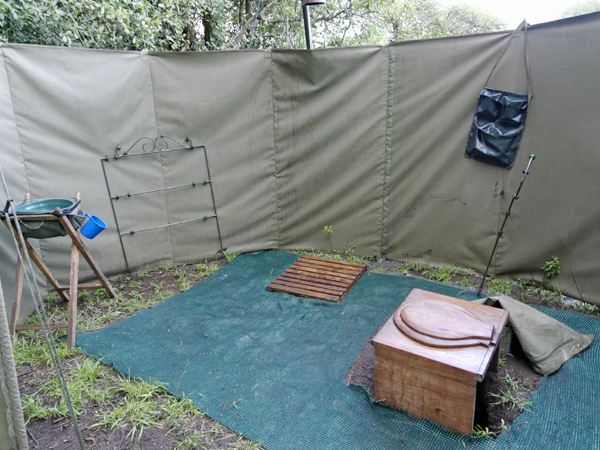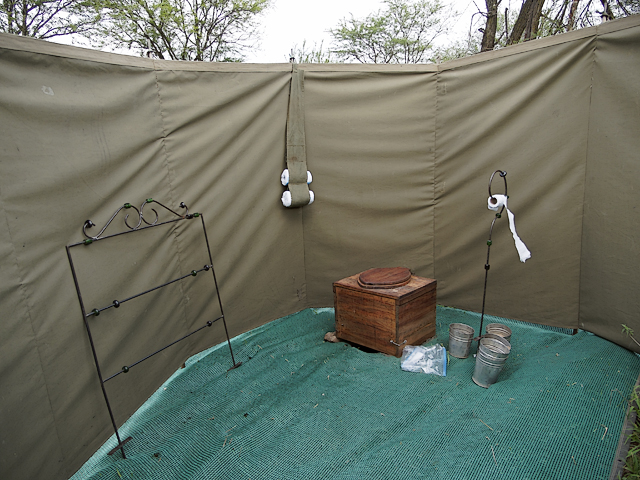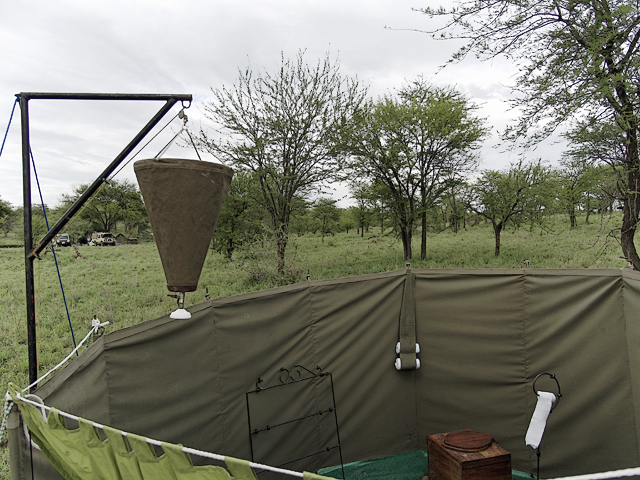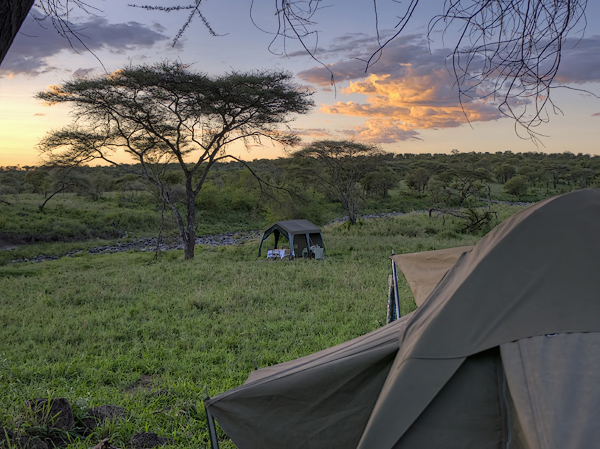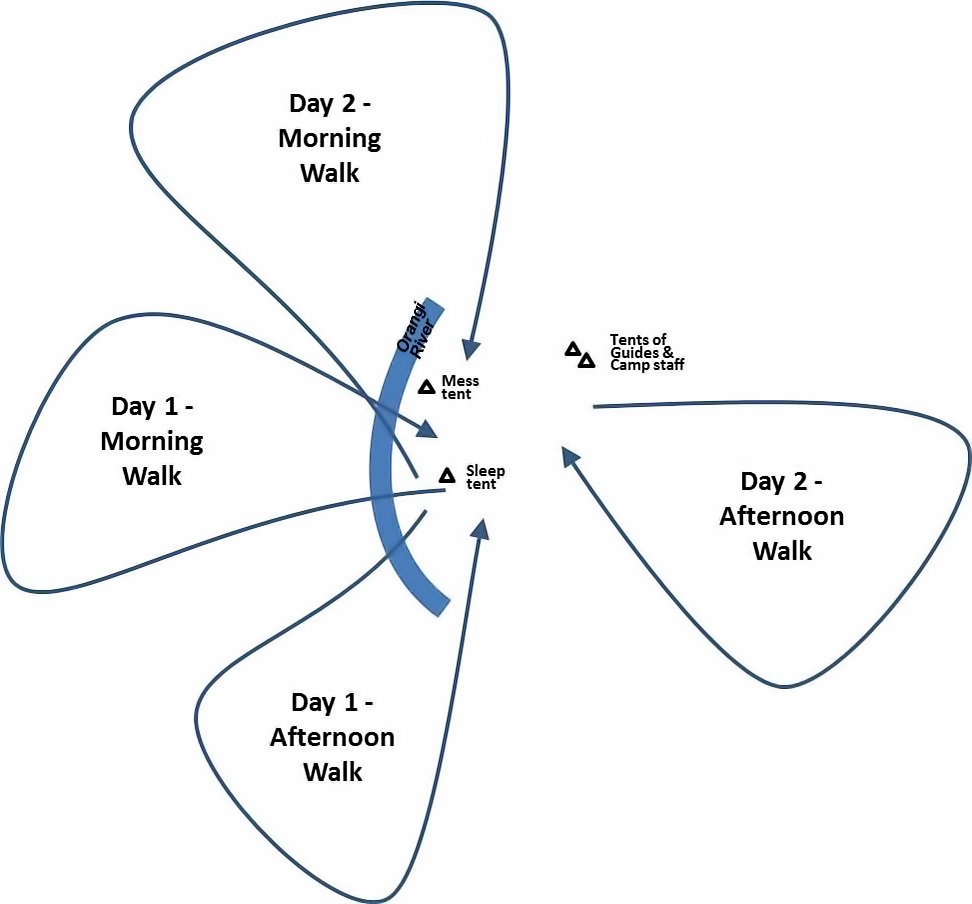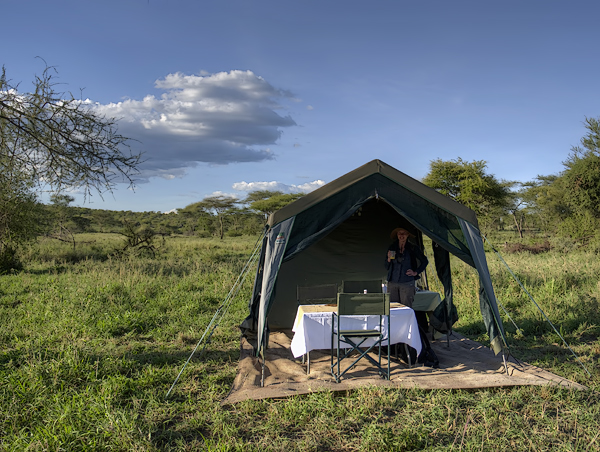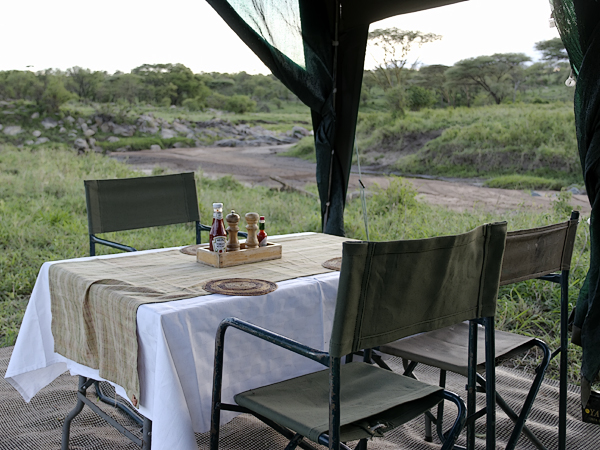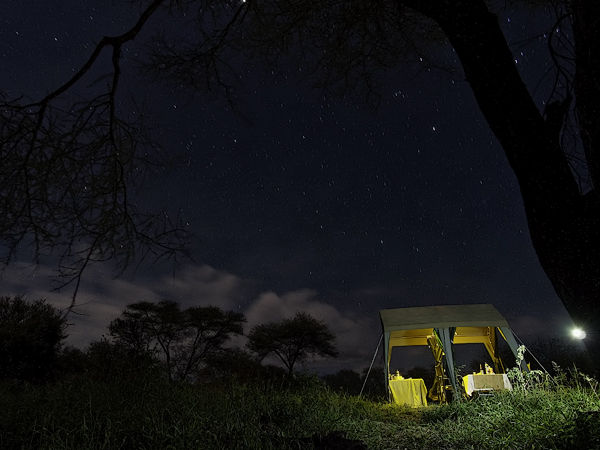Tanzania Holiday 16: "Mobile Camp" For The Serengeti Safari Game Drives
 Friday, December 27, 2013 at 16:47
Friday, December 27, 2013 at 16:47 For our "walking safari", we wrote a blog post about the "mobile camp" that was our base for exploration.
Now that we've finished that portion of the trip, we want to show the "mobile camp" for the safari game drives.
We stayed at one of the Moru "Special Campsites", located throughout the Moru Kopjes in Central Serengeti:
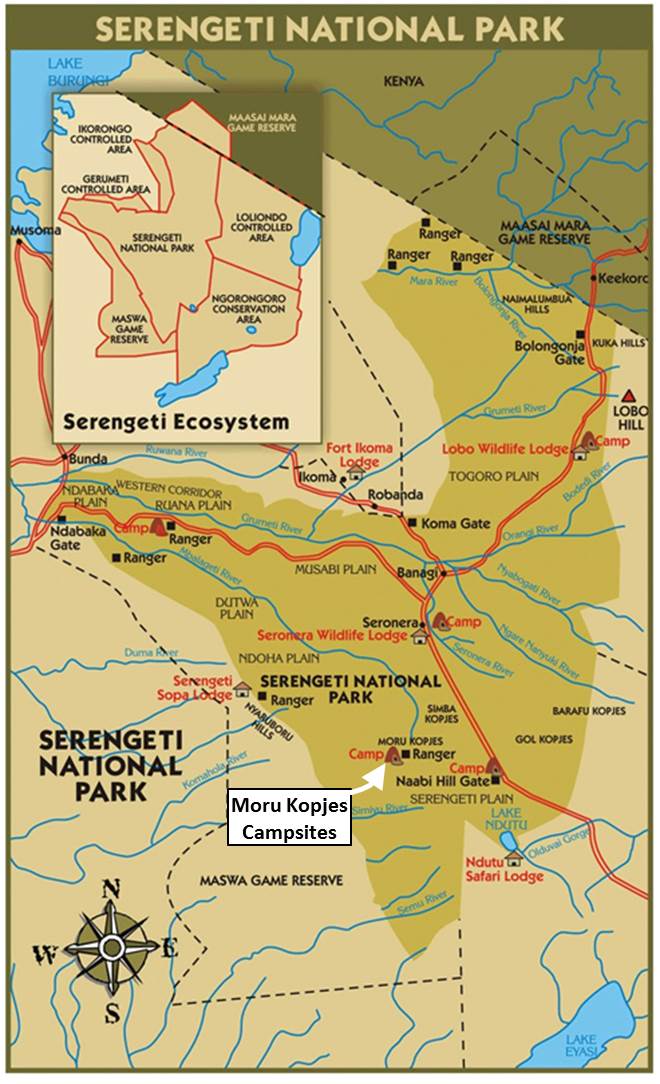 Source: www.tanzaniawildlifesafaris.com
Source: www.tanzaniawildlifesafaris.com
There are a number of different overnighting options in Serengeti National Park.
The Serengeti National Park General Management Plan defines facility types as a:
- "Lodge"
- "Permanent Tented Camp"
- "Premium Campsite"
- "Public Campsite"
- and "Special Campsite"
(There is also one youth hostel and one "rest house", but most facilities fall into the above categories.)
There are five "lodges" in the park. The lodges are upscale, almost like mini-resorts. Expensive, naturally.
They are also large, with around 150 beds each. Here is an example -- the Lobo lodge, with nice rooms and a pool:
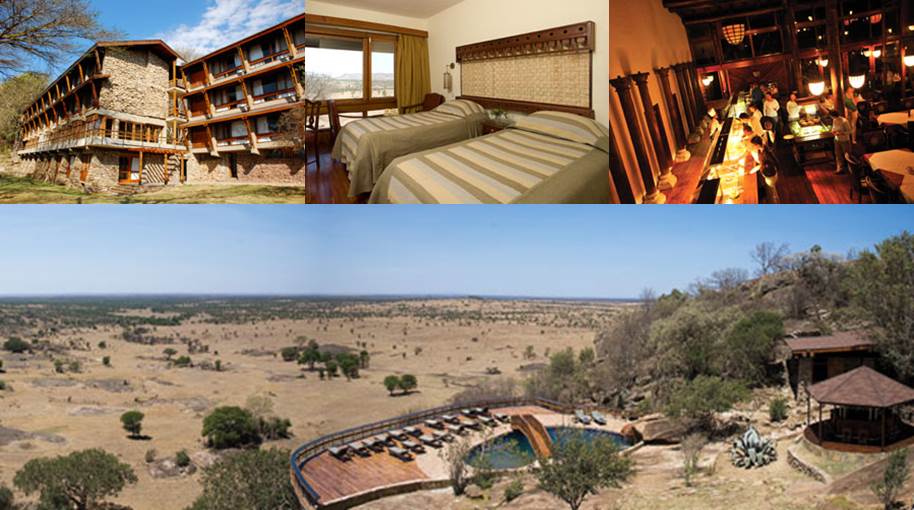 Source: www.hotelsandlodges-tanzania.comPermanent tented camps don't look like a hotel/motel building (as do lodges), but are no less decked out. There are ten of them, all significantly smaller at 30-50 beds each. Like lodges, they are more expensive, but unlike lodges they give a more secluded feel to your adventure - something like the classic British safaris (full service, but a sense of in-the-wilderness). Here is an example, the "Grumeti River Camp" (notice the "camp" has a small pool!):
Source: www.hotelsandlodges-tanzania.comPermanent tented camps don't look like a hotel/motel building (as do lodges), but are no less decked out. There are ten of them, all significantly smaller at 30-50 beds each. Like lodges, they are more expensive, but unlike lodges they give a more secluded feel to your adventure - something like the classic British safaris (full service, but a sense of in-the-wilderness). Here is an example, the "Grumeti River Camp" (notice the "camp" has a small pool!):
There are ten Premium Campsites in the park. Technically they can be broken down... but they are there effectively permanent. Yes, the sleeping tents and dining areas are "tents", but definitely not a Boy Scout feel. These are significantly smaller, with usually a capacity of 12 beds. Here is one example, the Simiyu premium campsite:
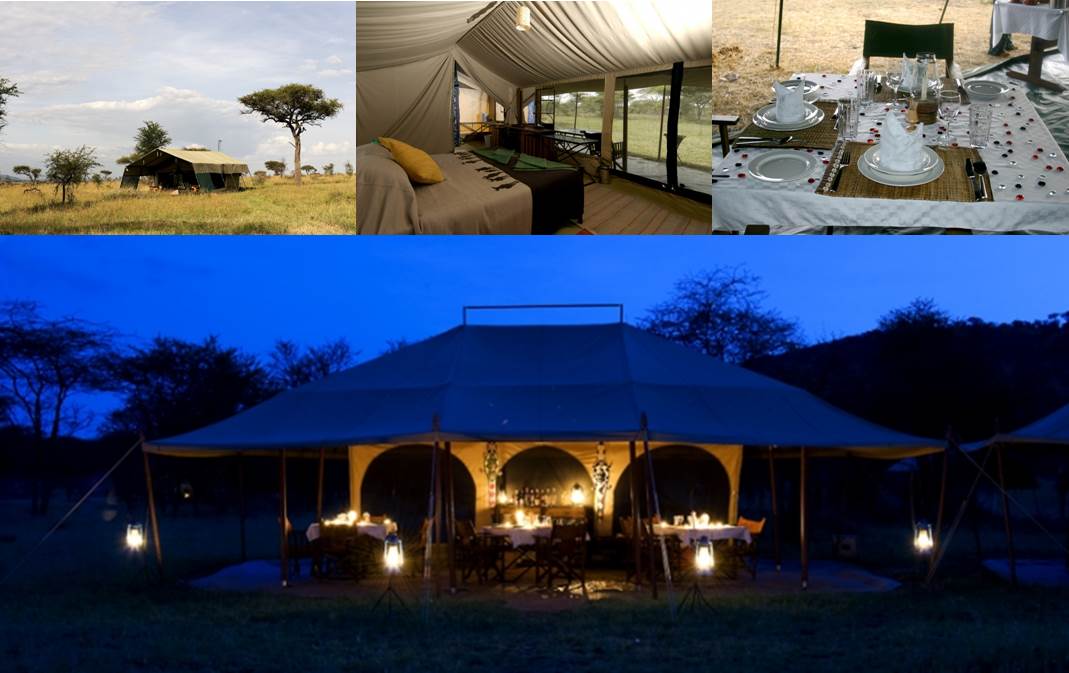 Source: www.safariandbeach.com
Source: www.safariandbeach.com
Next, we have the Public Campsites. These are similar to the high volume, basic services style found in the U.S. national parks - true camping tents, but with central facilities for bathrooms, running water, picnic tables, etc. There are 8+ in the Park, with capacities between 20-60 beds. Here is an example, the Tumbili Public Campsite:
These various facilities all are spread throughout the Park, and depending on the time of year, some are more convenient to animal viewing than others. However, at any of them you have the chance to have surprises --
this Public Campsite had a lion kill during the night, and they awoke to the lions eating their buffalo victim:
There is one more category of lodging in the Park: "Special Campsites". These are truly temporary setups.
No permanent buildings, no facilities of any kind (toilets, running water, etc.) The idea is that you are truly camping in the wild. However, full disclosure it required here: the tour guides set up the tents, bathroom tents with pit toilet and shower, meal tents, and do the cooking, etc. So no Grizzly Adams here.
We stayed at the Moru Special Campsite #6. Moru Special Campsites are located around the Moru Kopjes (see map at top of page), and are known for a large lion pride in the area (that's foreshadowing for a future post...):
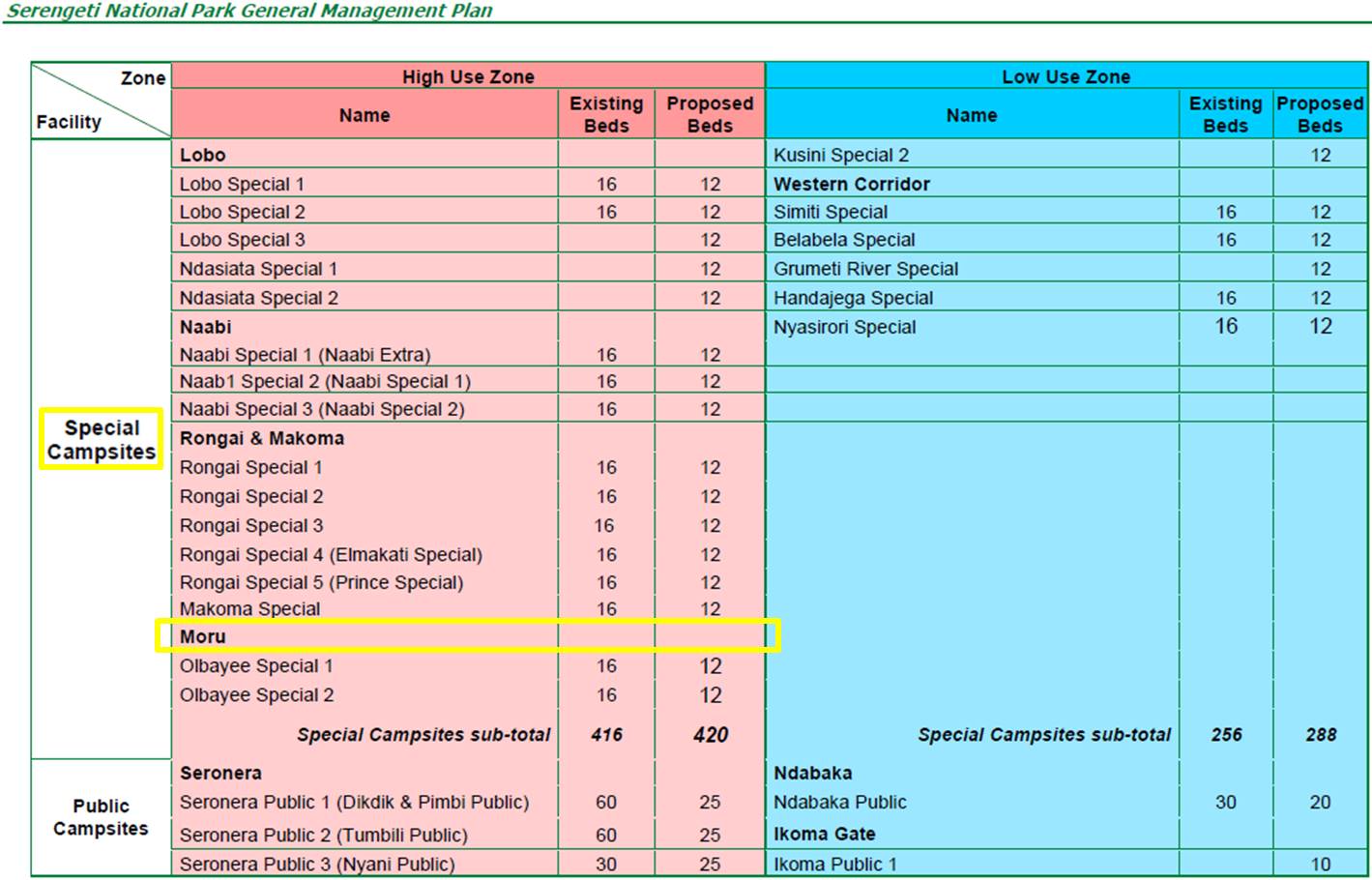 Source: Serengeti National Park General Management Plan
Source: Serengeti National Park General Management Plan
For this time of year (late December), our location in the Park was fine. The wildebeest herd is not moving actively -- they're spread throughout the park, with a large portion of them just a bit south, preparing for the birthing month not far away in February. In fact, we saw them on the way into the Park:
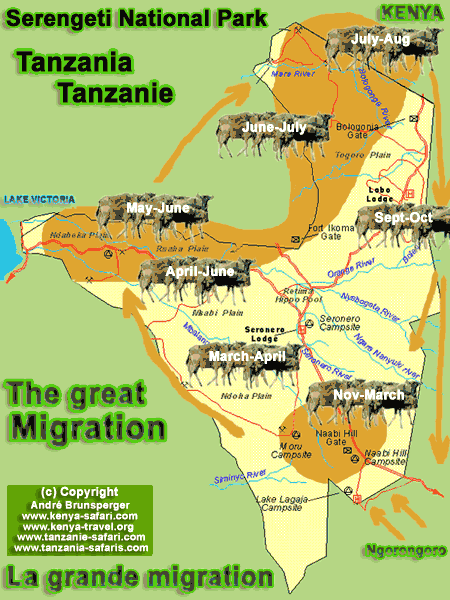 Source: www.tanzania-safaris.com
Source: www.tanzania-safaris.com
BTW: if you want to know where wildebeest are each month, this is a neat web page showing the migration:
The defining feature of the Moru Special Camping sites are obviously the Moru Kopjes - largest set in the Park.
On the map below, the blue dots are kopjes, and the Moru campsites labeled towards the bottom of the picture:
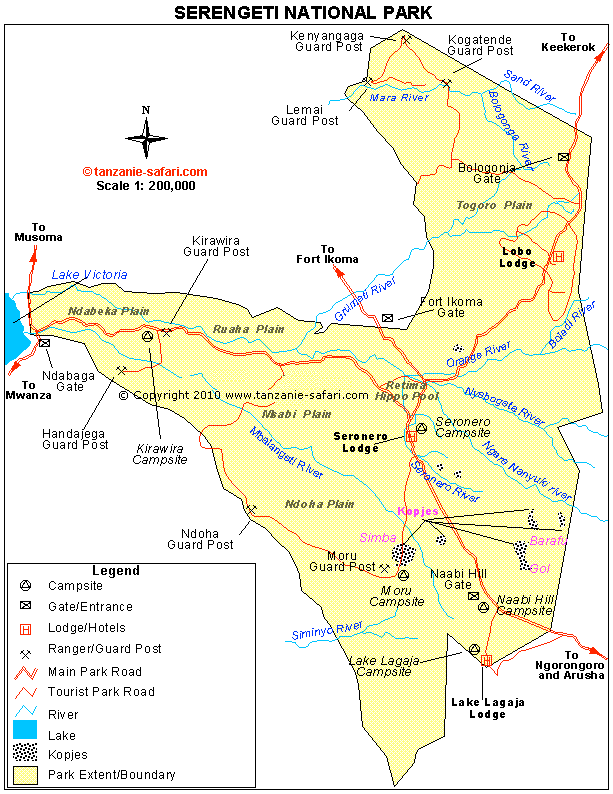 Source: www.tanzania-safaris.com
Source: www.tanzania-safaris.com
As you approach "our" kopje, for Moru Special Campsite #6, this is the view:
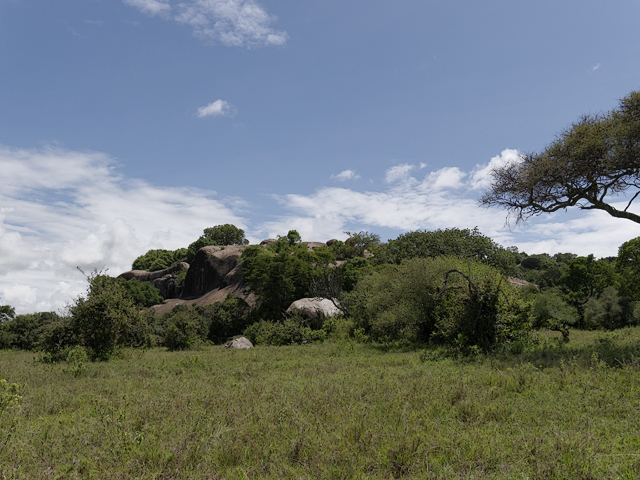
It's a classic kopje. Large rocks, trees and bushes. We kept the photo to 640px across for fast loading on the Web,
but did you happen to see anything of our campsite? Here is a cropped area of the above photo for a better look:
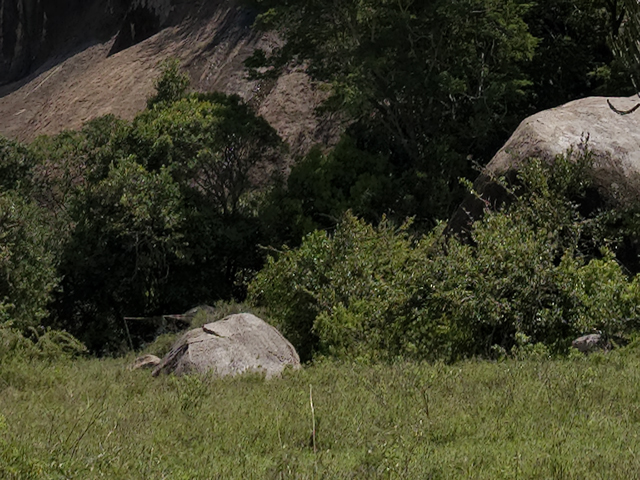
Nestled behind the small rock is our sleeping tent! Our camp was tucked in, almost up against the large rocks.
The dining tent was hidden from view altogether, behind some trees/bushes and an even larger rock.
You can see it here, and also the bathroom tent just peeking out from the far right in the photo:
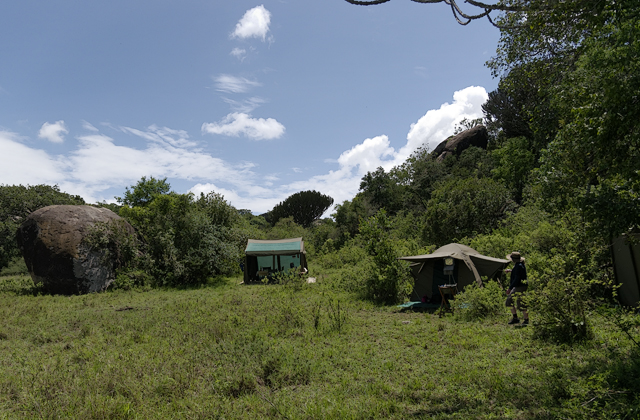
Our guide Prim & the other camp staff (2-3 for setup, cooking, etc) had their own area ~35m straight back from us.
Here is a view from the sheltered camping area, looking out from our tents onto the Central Serengeti.
Because it's a "special" (isolated) campsite, you really get the feeling of being alone and small in the wild:
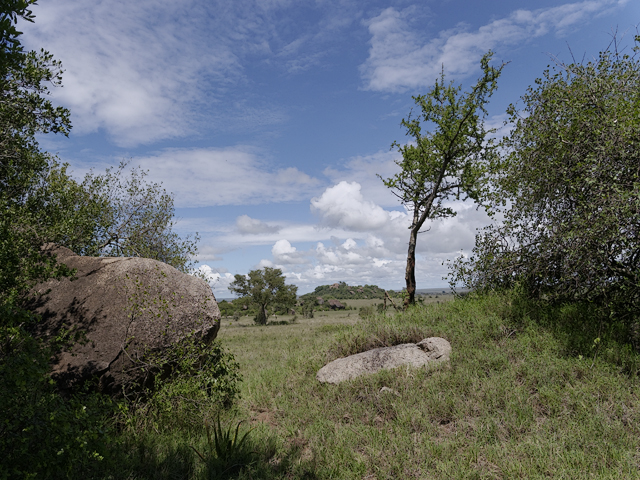
When we step a few feet out through the gap, the view opens up to the plain and another of the kopjes far ahead:
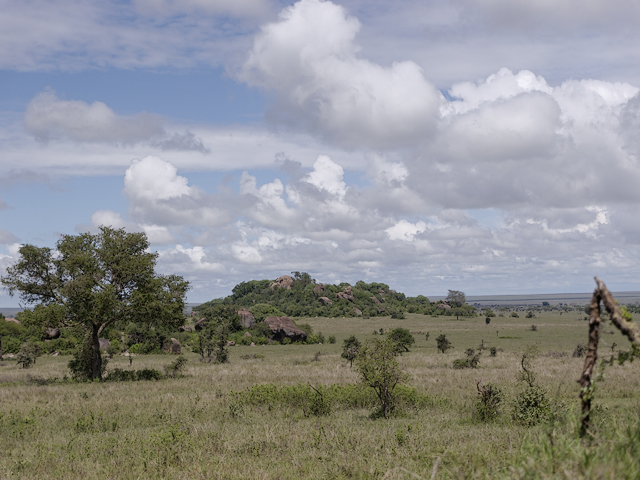
Our guide would have to walk that way, out towards the road to/from camp, to get mobile phone reception:
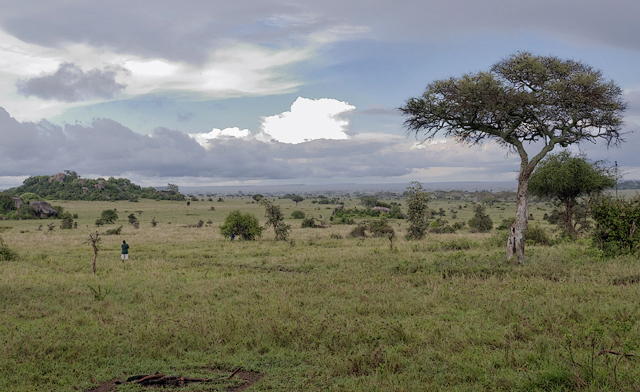
This was our leader Prim talking to his family on the phone. He led our entire safari (all Parks). Mark and Daniel, from the walking safari, departed after the walking portion and we only needed Prim for the upcoming game drives:
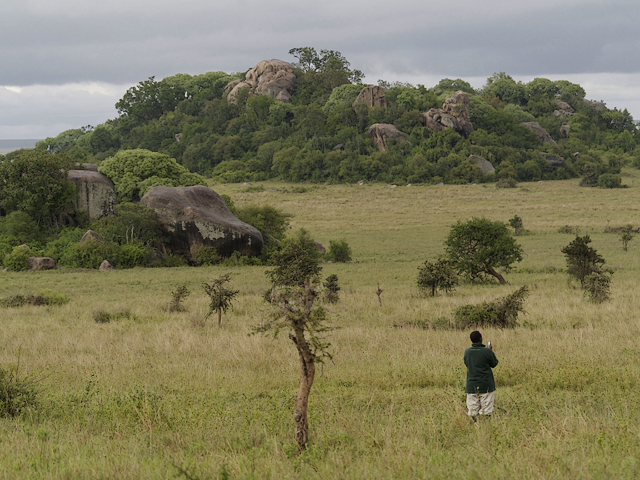
We would see him there early in the morning, and then in the evening, talking to his wife and baby. After all, this was December 23, and he would be spending Christmas Eve and Christmas Day with us rather than with his family:

At the end of each day, when we got out of the Land Cruiser, we looked back at the road to camp and Moru Kopjes - before heading into the campsite to wash up, have some dinner, and look and the photos we captured that day:
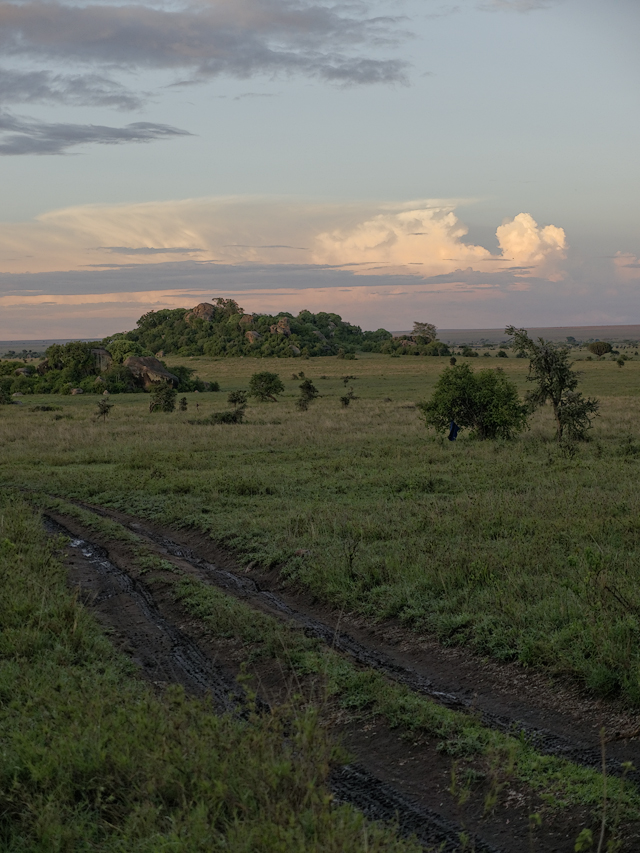
The meal tent, as on the walking safari, was a simple open canopy with a staging table and a dining table for two:
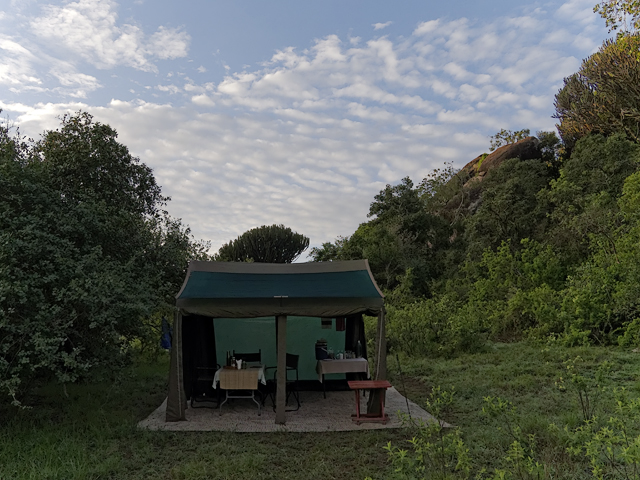
Our cook would walk from the guides' area carrying the food and drink, and leave it on the table for us:
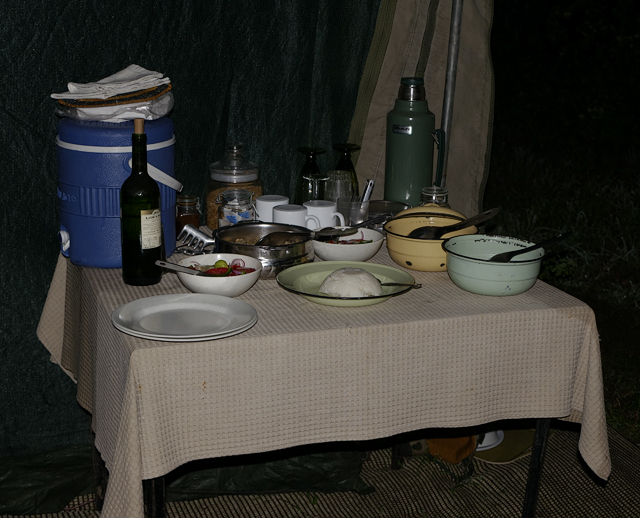
Overall the food was great -- rice or potatoes, vegetables, and different variety of main dish every evening:
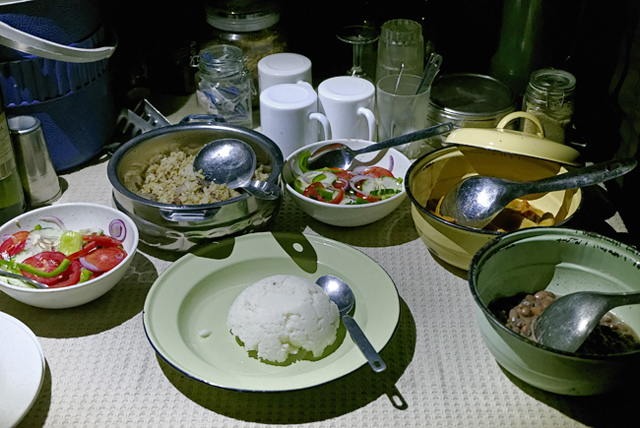
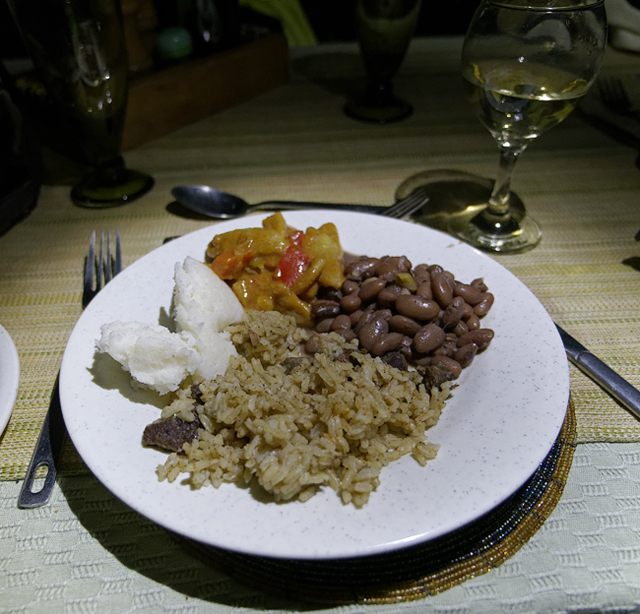
We had some electric hanging lamps to give some illumination (this photo with flash, though):
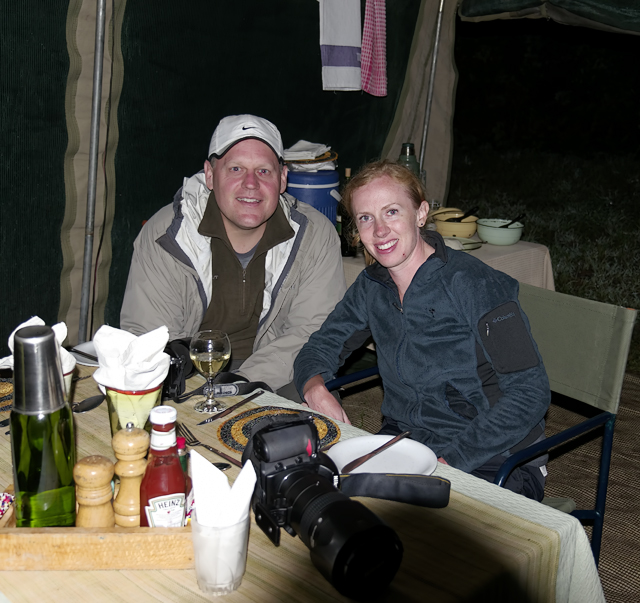
Notice that the camera is always nearby, either in case we can shoot something, or just to enjoy the day's photos:
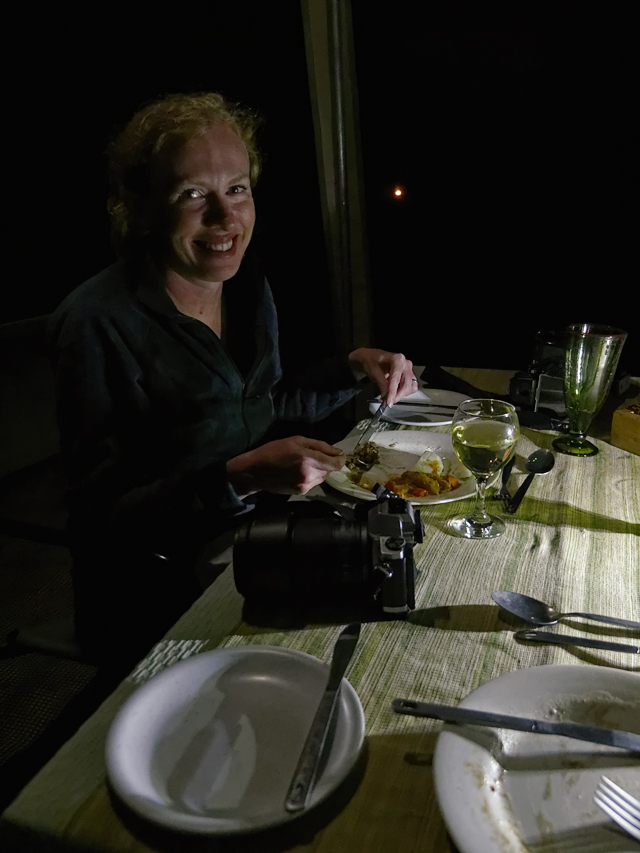
There was not much wildlife around at dinnertime (that we could see, anyway). Breakfast, however, was a different story. Baboons would actively patrol the nearby trees. We were warned that they could try to steal something, so if they came close we were assertively to drive them off. They never made a move, just being content to feed there:
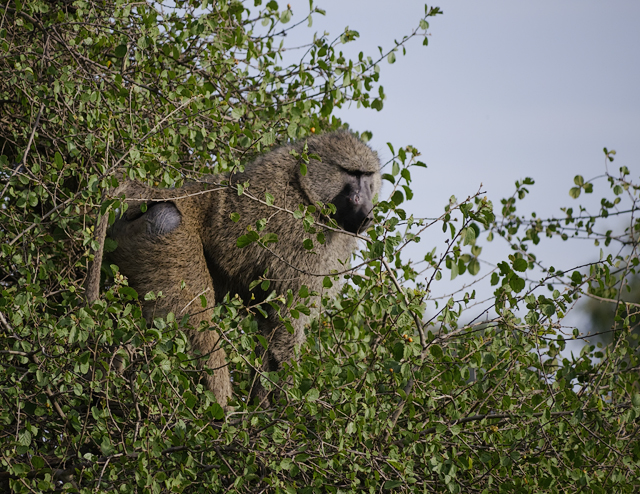
If we looked closely, there was often movement further out on the plain. See anything from this breakfast photograph?
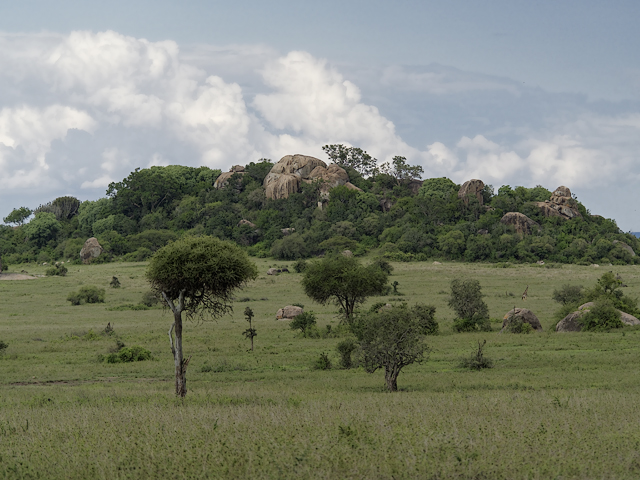
Let's zoom a little closer (with our bowl of breakfast bread on the table for perspective)...
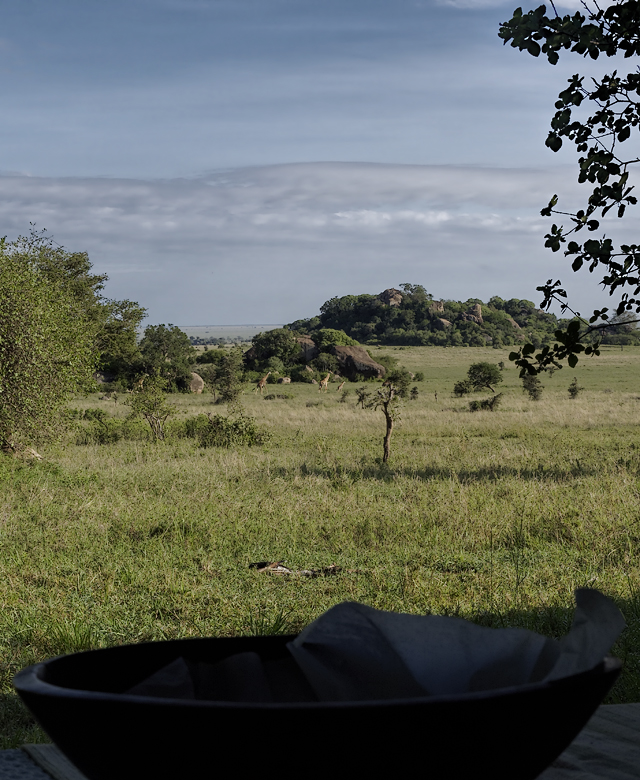
Yes, a family of giraffes with a young one! (These were a nice treat, because it was usually water buffalo.)
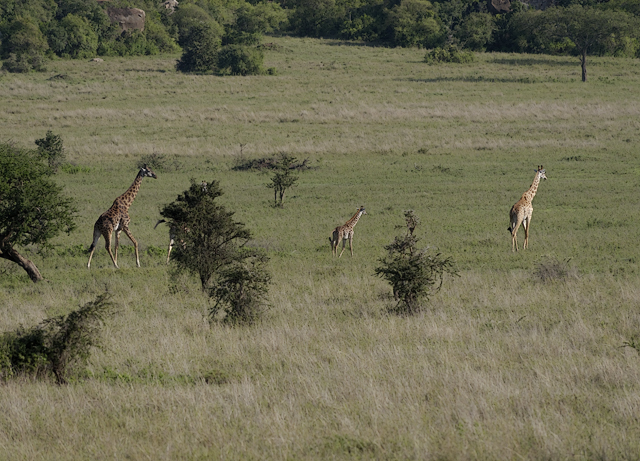
For pre-meal washing / the pit toilet / showers, the bathroom tent was just like the walking safari mobile camp:
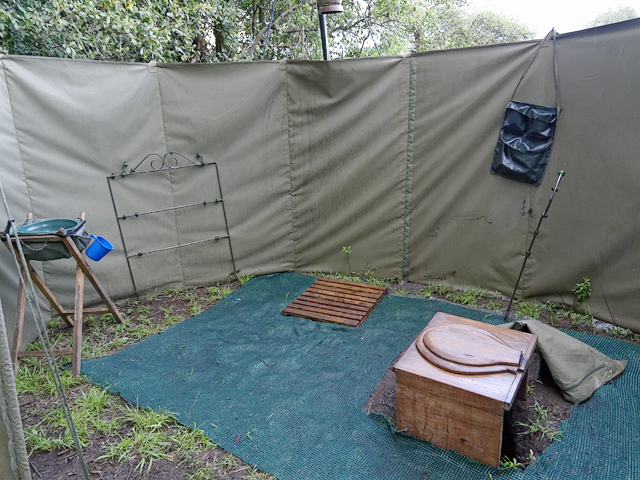
It was certainly an unusual experience to stick your head above the canvas wall and see the Serengeti:
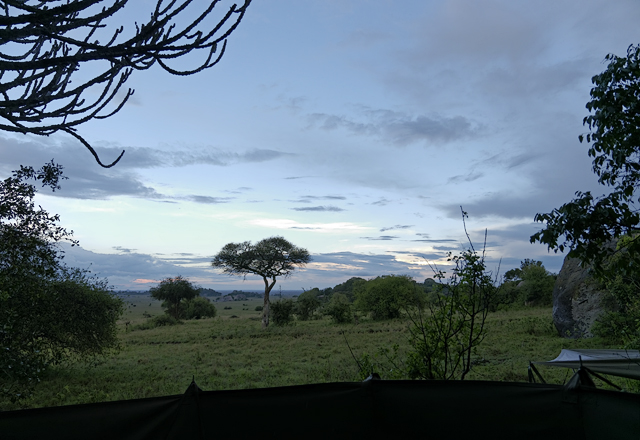
In the evening, we could look up from the bathroom area and see the moon through the overhead tree:
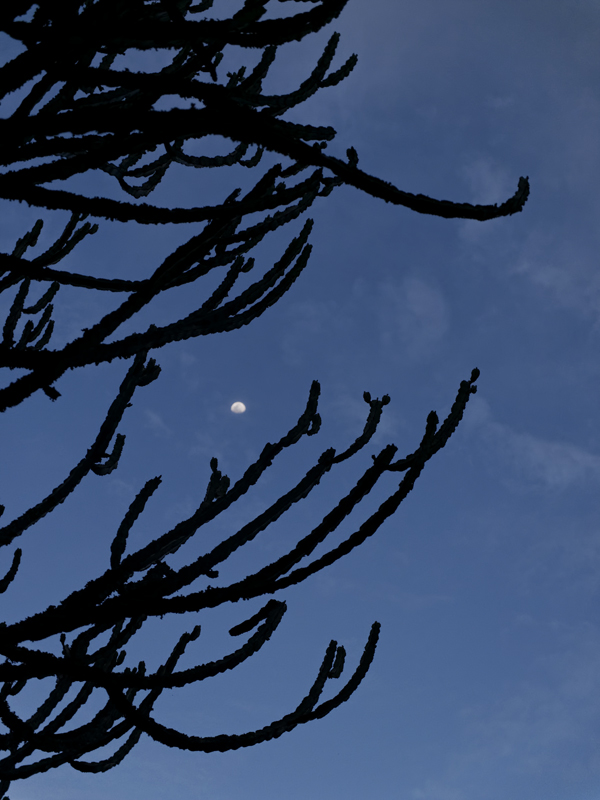
We were fortunate to get almost a full moon for this part of the trip. (It's good hunting light for the lions, BTW...)
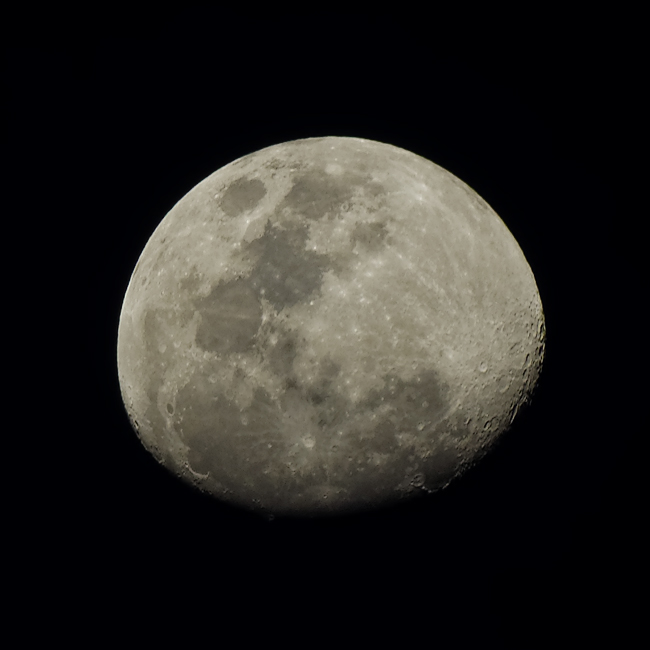
There were a couple of times when we couldn't sleep right away because of the excitement of the day, so we messed around with light painting -- a longer exposure time, and using a handheld flashlight to illuminate the scene:
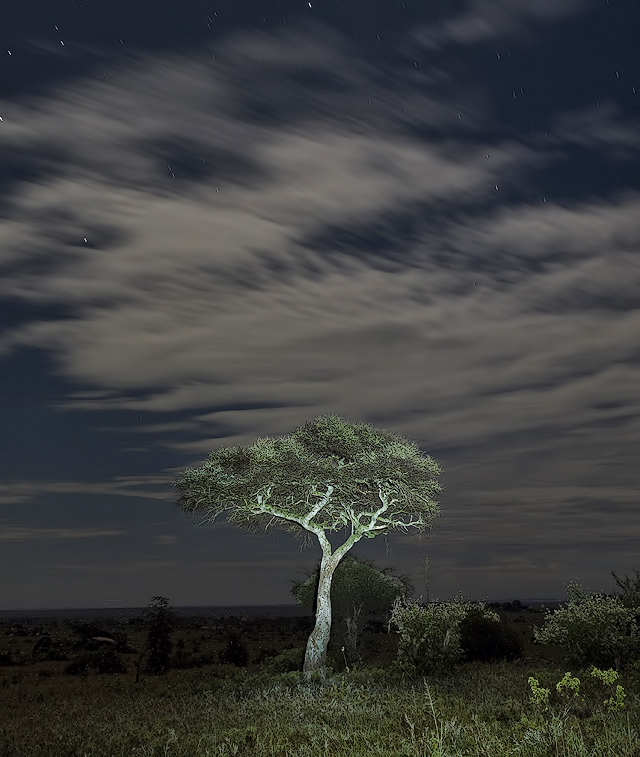
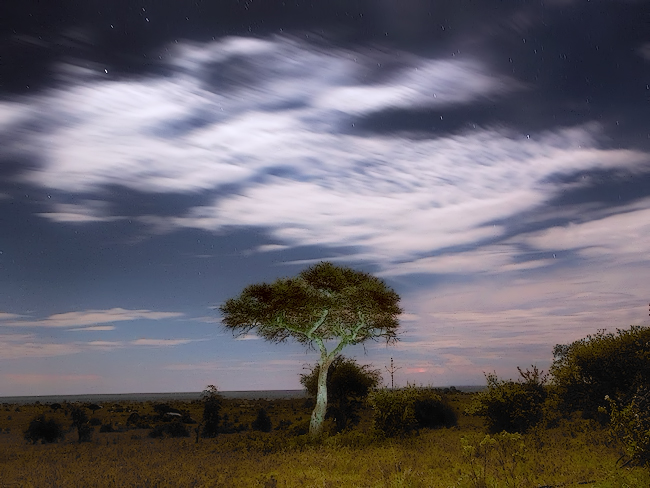
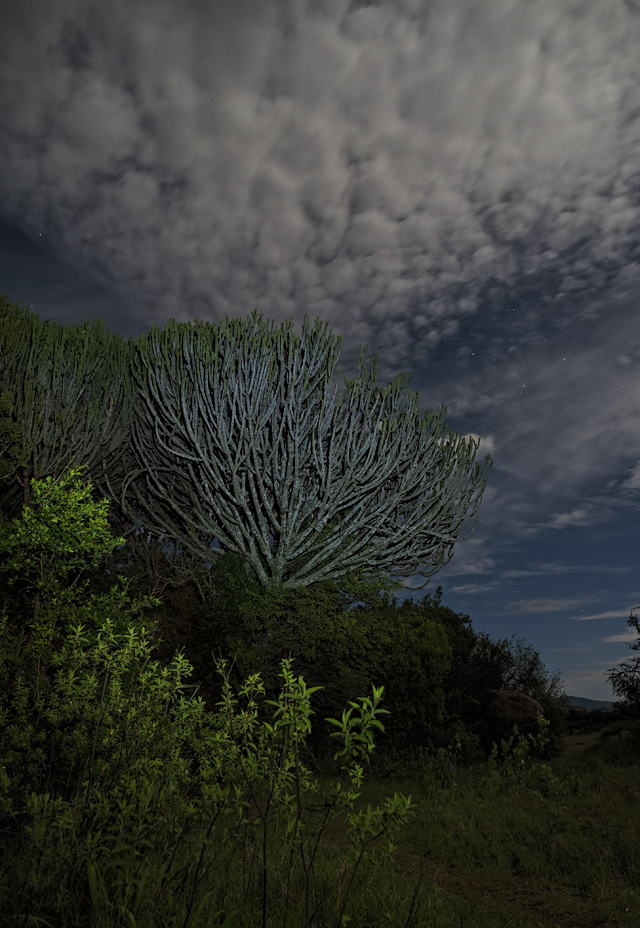
The view from camp also held some AMAZING surprises in store for us... more on these in our future blog posts!
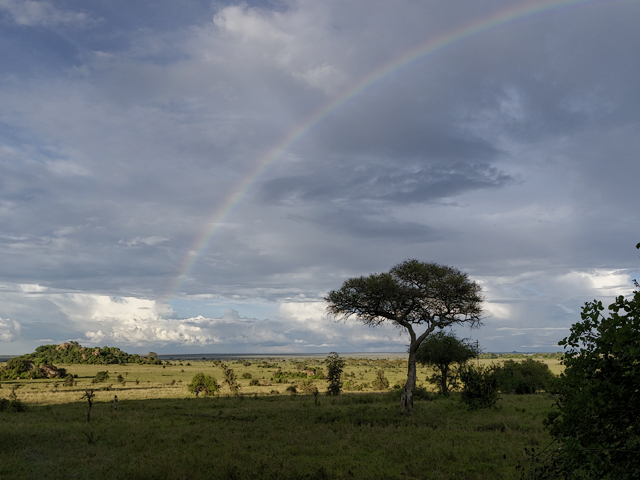
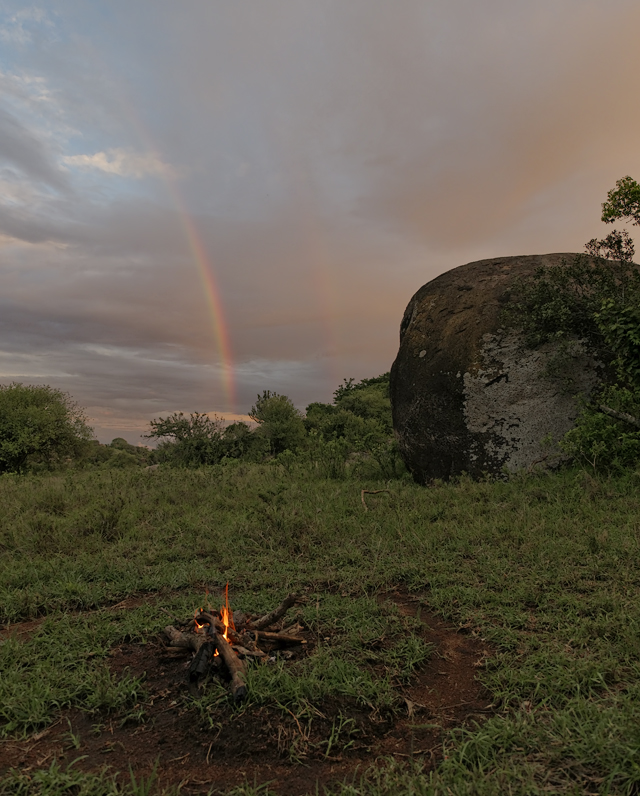
And finally... this was our honeymoon. For the wedding, instead of registering for physical gifts (e.g., china, silverware, etc.), we registered different parts of this Tanzanian safari. For this blog post, we wish to heartfully thank:
- Ronald M, for the overnights in this great location. It made a camper out of Frau A! THANK YOU!
- Amie and Kevin H, for the nights in this special camp. We absolutely loved it. THANK YOU!
 Herr J ...
Herr J ...  7 Comments
7 Comments  Travel tagged
Travel tagged  Moru Kopjes,
Moru Kopjes,  Serengeti National Park,
Serengeti National Park,  Wayo Africa,
Wayo Africa,  camp,
camp,  dining tent,
dining tent,  game drive,
game drive,  sleeping tent,
sleeping tent,  tent
tent  1 Reference ...
1 Reference ...  Print Article
Print Article  Email Article
Email Article 



